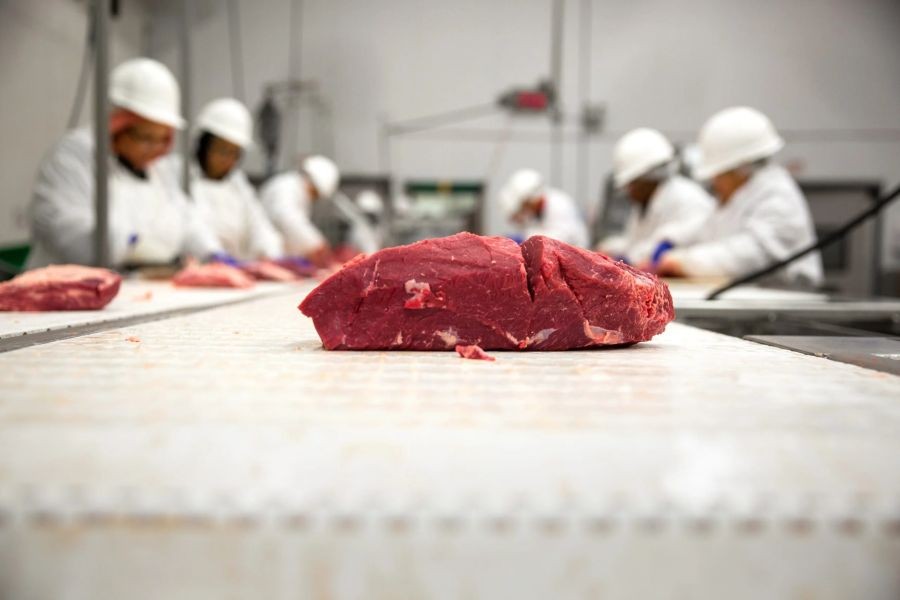Australia's meat industry is a cornerstone of its agricultural sector, contributing significantly to the national economy. However, beneath the surface of this robust industry lies a complex web of challenges and opportunities. As a policy analyst, understanding the intricacies of the meat industry in Australia is crucial for developing informed policies that balance economic growth with sustainability and ethical considerations.
The Economic Significance of the Meat Industry in Australia
Australia is one of the world's largest exporters of beef and lamb, with the meat industry contributing over AUD 20 billion to the national economy annually. According to the Australian Bureau of Statistics (ABS), the livestock sector employs approximately 200,000 people, underscoring its importance to rural economies. The industry's export-driven nature makes it a vital part of Australia's trade balance, with significant markets in the United States, China, and Japan.
Impact on the Australian Economy
The Reserve Bank of Australia (RBA) highlights that fluctuations in meat exports can have a ripple effect on the broader economy, affecting currency value and trade surpluses. Moreover, the industry's growth has been pivotal in offsetting downturns in other sectors, particularly during global economic uncertainties. However, this dependence on exports also exposes the industry to vulnerabilities, such as trade disruptions and changes in international demand.
Sustainability and Environmental Concerns
As the world shifts towards sustainable practices, the meat industry faces increasing scrutiny over its environmental footprint. The Australian Competition & Consumer Commission (ACCC) has emphasized the need for the industry to adopt more sustainable practices to meet both regulatory requirements and consumer expectations.
Environmental Impact
The meat industry is a significant contributor to greenhouse gas emissions, land degradation, and water usage. According to a report by the Commonwealth Scientific and Industrial Research Organisation (CSIRO), livestock production accounts for approximately 10% of Australia's total greenhouse gas emissions. This has led to calls for more stringent environmental regulations and the adoption of innovative practices to reduce the industry's carbon footprint.
Regulatory Landscape and Industry Challenges
The regulatory framework governing the meat industry in Australia is complex, involving multiple agencies such as the Australian Taxation Office (ATO) and the Australian Prudential Regulation Authority (APRA). These regulations aim to ensure food safety, fair trade, and environmental sustainability. However, they also present challenges for industry players, particularly small and medium enterprises (SMEs) that may struggle with compliance costs.
Challenges in Compliance
Compliance with regulatory standards is a major challenge for the meat industry. The ACCC has identified issues related to transparency in pricing and labeling, which can lead to consumer mistrust. Additionally, the costs associated with meeting these standards can be prohibitive for smaller producers, potentially stifling innovation and competitiveness.
Case Study: JBS Australia – Navigating Global Markets
JBS Australia, a subsidiary of the global meat processing giant JBS, provides a compelling case study of how Australian companies can navigate the complexities of global markets while adhering to local regulations.
Problem:
JBS Australia faced the dual challenge of maintaining its competitive edge in international markets while complying with Australia's stringent environmental and regulatory standards.
Action:
The company invested in advanced technologies to improve efficiency and reduce its environmental impact. This included implementing water-saving technologies and adopting renewable energy sources to power its operations.
Result:
These initiatives led to a 15% reduction in water usage and a 20% decrease in greenhouse gas emissions. Additionally, JBS maintained its market position by securing long-term contracts with key international buyers, resulting in a 10% increase in export revenues.
Takeaway:
This case study illustrates the importance of innovation and sustainability in maintaining competitiveness in the global meat market. Australian companies can benefit from investing in sustainable practices that align with both regulatory requirements and consumer preferences.
Debunking Common Myths About the Meat Industry
- Myth: The meat industry is the largest contributor to environmental degradation in Australia.
- Reality: While significant, the meat industry's environmental impact is eclipsed by other sectors such as energy production. Efforts to improve sustainability are ongoing, with advancements in technology playing a crucial role.
- Myth: All meat products are equally harmful to the environment.
- Reality: The environmental impact varies significantly between different types of meat. For example, beef production has a higher carbon footprint compared to poultry.
Future Trends and Predictions
Looking ahead, the meat industry in Australia is poised for transformation driven by technological advancements and changing consumer preferences. According to Deloitte's Agribusiness Outlook, the adoption of alternative proteins and plant-based meat substitutes is expected to grow, offering both challenges and opportunities for traditional meat producers.
By 2030, it's predicted that alternative proteins could capture up to 10% of the global meat market. For Australia, this presents an opportunity to diversify its agricultural exports and reduce the environmental impact of livestock farming.
Conclusion
The meat industry in Australia is at a crossroads, facing the dual challenges of maintaining economic significance while addressing environmental and regulatory demands. By embracing innovation and sustainability, the industry can continue to thrive in the global market. For policymakers, balancing these factors will be crucial to ensuring the industry's long-term viability and contribution to the Australian economy.
What's your perspective on the future of Australia's meat industry? Share your insights below!
People Also Ask (FAQ)
- How does the meat industry impact Australia's economy?
The meat industry contributes over AUD 20 billion annually, supporting rural economies and employment, according to the ABS.
- What are the environmental concerns associated with the meat industry?
Livestock production accounts for about 10% of Australia's greenhouse gas emissions, per CSIRO reports.
- What are the future trends in the meat industry?
Alternative proteins and plant-based substitutes are predicted to capture up to 10% of the market by 2030, as per Deloitte.
Related Search Queries
- Meat industry economic impact in Australia
- Sustainability in Australian agriculture
- Regulations affecting the meat industry
- Alternative protein market in Australia
- Environmental impact of livestock farming
- Future of meat production in Australia
- Challenges in the Australian meat industry
- Case studies of Australian meat companies
- Meat industry trends 2025
- How to improve sustainability in farming
































Jofraarcher
6 months ago